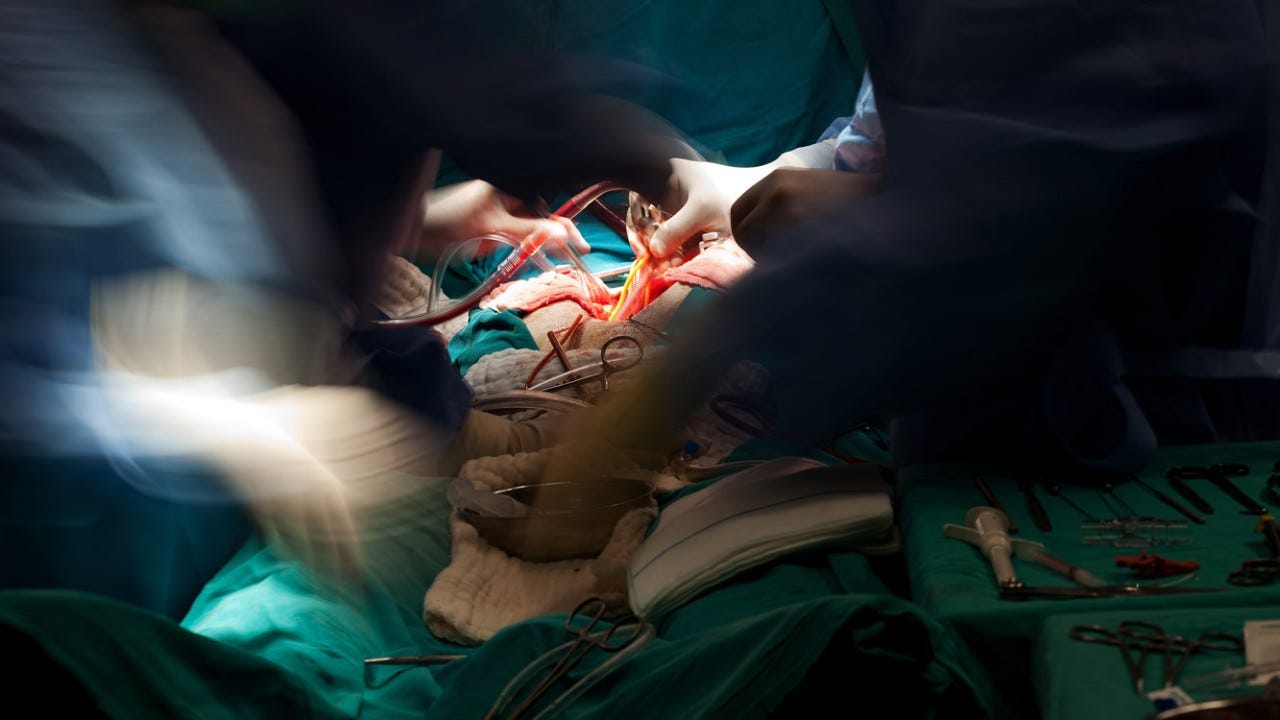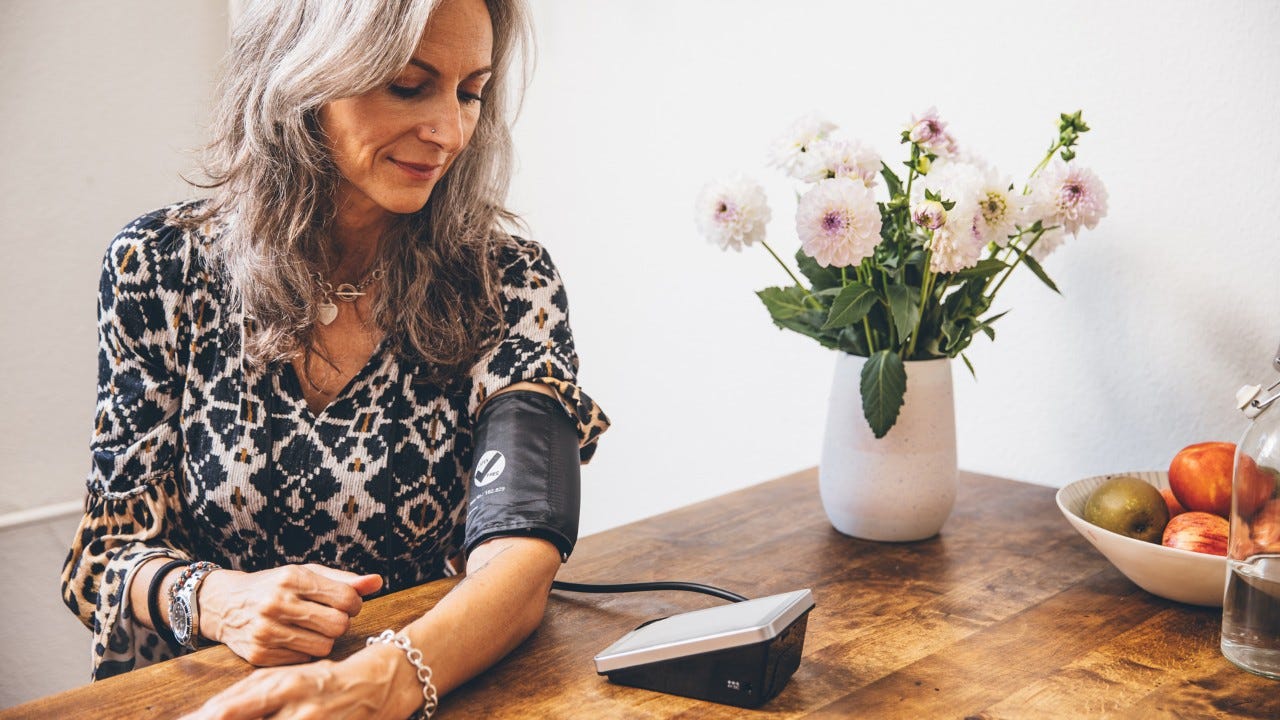Outpatient heart surgery: the future of medicine?
Outpatient procedures are revolutionising medicine. Heart operations without an overnight stay in hospital, for example, are becoming more commonplace.

Go to the hospital in the morning, have a heart operation, and then fall asleep in your own bed that night: it sounds too good to be true. But it isn’t. In the last few years, the trend has become increasingly apparent: outpatient procedures are the future. In Scandinavia, more than 60% of operations are already performed on an outpatient basis. In the USA, it’s as much as 80%. Switzerland is also moving in the same direction, albeit much more slowly.
In 2019, it was decided that six types of procedures would only be performed on an outpatient basis in standard cases. These include, for example, varicose vein surgery on the legs, haemorrhoid procedures, inguinal hernia surgery, examinations and operations on the cervix or uterus, various minimally invasive procedures to treat meniscus and cruciate ligament injuries, as well as operations on the tonsils.
Cardiac catheters often used on outpatients
Thanks to the rapid development of medical technology, even heart surgery is now possible without the need for days in hospital. “Heart surgery isn’t always major and complex. There are also minor operations that can be carried out on an outpatient basis without any problems, depending on the patient’s physical condition and age,” explains Anja Fäh, specialist in cardiology and attending physician at the Hirslanden Klinik Im Park. These include inserting pacemakers and replacing batteries, for example. In some cases, the treatment of cardiac arrhythmias can also be carried out efficiently without the need for an overnight stay in hospital.
By far the most common procedure conducted on an outpatient basis is cardiac catheterisation, explains the specialist. “Patients generally come to me when they suffer from shortness of breath, feel pressure on the chest or when they have less stamina than they used to,” says Fäh. In these cases, the doctor suggests a preliminary outpatient examination, which includes an ECG, a heart ultrasound and a stress test. “If any abnormalities are found during these checks, it can make sense to investigate further by doing cardiac catheterisation, for example to prevent a heart attack,” continues Fäh. If there are no indications that a heart attack is imminent, the procedure can easily be planned and performed on an outpatient basis.
The day of the procedure
On admission to hospital, patients are prepared for the procedure. The examination is performed in the cardiac catheterisation laboratory (cath lab) under local anaesthetic. The thin catheter is pushed into the heart from the puncture site at the wrist or groin. “The patient doesn’t feel any pain because there are no sensitive nerves inside the blood vessels,” says Fäh. However, if the thought of this makes you feel queasy, you can also ask for a light sleeping pill.
Specialists can detect any constrictions thanks to a contrast medium that is injected into the blood vessels. “If there’s severe narrowing of the vessels, we can even, in the best cases, expand the constriction with a balloon during the same treatment,” says Fäh. Following the examination, patients have to stay in the hospital for a few hours so that any bleeding can be treated immediately.
This is a welcome development for many patients because the operations can be carried out in a much shorter time. Patients typically only spend two to six hours in the Hirslanden Group’s outpatient clinics before returning to their own four walls in the evening. This allows them to recover in familiar surroundings without having to adapt to the structured daily routine of a hospital.
Another advantage is continuous care by the same medical staff throughout. During outpatient procedures, there’s often no need for shift changes, which means that the patient deals with the same contact person upon arrival and departure. This contributes to more personalised care, and also ensures that nothing is forgotten when the patient’s file is handed over.
Aftercare concept ensures safety
Although the increased use of outpatient surgery offers many advantages, patients often have concerns about safety. “Many people are happy that they don’t have to spend the night in hospital, but they’re also very surprised that a heart operation can be performed on an outpatient basis,” says Anja Fäh.
She is often asked whether outpatient care is as effective and safe as inpatient care. She emphasises that there is no difference between an outpatient and an inpatient procedure as soon as the door to the operating theatre opens.
The difference lies only in the preparation and aftercare. After the operation, patients receive a detailed aftercare plan and can contact the specialist responsible at any time via an emergency number. “We’re finding that patients are in fact calling more often after outpatient surgery to make sure that the healing process is going according to plan,” explains Fäh.
Especially during cardiac catheterisation, bruising or slight swelling can occur. “This looks nasty for a few days, but it’s usually harmless. Nevertheless, it’s good that the patients contact me. I always tell them that it’s better to call once too often than once too little.”
Sometimes inpatient care is worthwhile
Despite all the medical possibilities, most outpatient procedures are performed on younger people in a good state of health, while older patients are hospitalised in case of doubt. This is mainly due to the fact that, as patients get older, they might not just have one medical problem, but several. “In these cases, it’s important that we observe the person long enough and can react quickly in an emergency,” explains Fäh.
Inpatient treatment can also be better for single people, because they don’t have a helping hand at home to support them in an emergency. “We always look at the overall situation, discuss it with the patient, and then decide which is the best option for them,” says Fäh.
Heart attacks – an invisible threat
Heart attacks are one of the most common forms of heart disease and are triggered by the sudden blockage of a coronary artery. Risk factors that have existed for years, such as obesity, high blood pressure, smoking or lack of exercise can contribute to them.
A heart attack is life-threatening because the blockage of one or more coronary arteries leads to a sustained reduction in the supply of blood to the heart muscle. The effects vary depending on the artery affected. In the worst case, a cardiac arrest can occur. That’s why rapid medical help is crucial.
This makes it all the more important to recognise the symptoms correctly:
- severe pain behind the breastbone, possibly spreading to the left arm, shoulder, lower jaw or upper abdomen.
- Extreme restlessness or fear of death
- Pale grey complexion
- Feeling of weakness
First aid is essential
If you suspect a heart attack, alert the emergency services immediately. Check for consciousness, breathing and vital signs. In the event of circulatory arrest, you must start cardiopulmonary resuscitation immediately.
If the affected person is conscious, you should gently position them with their upper body raised, open any tight clothing, and protect them from prying eyes. Monitor their circulation until the emergency services arrive.


